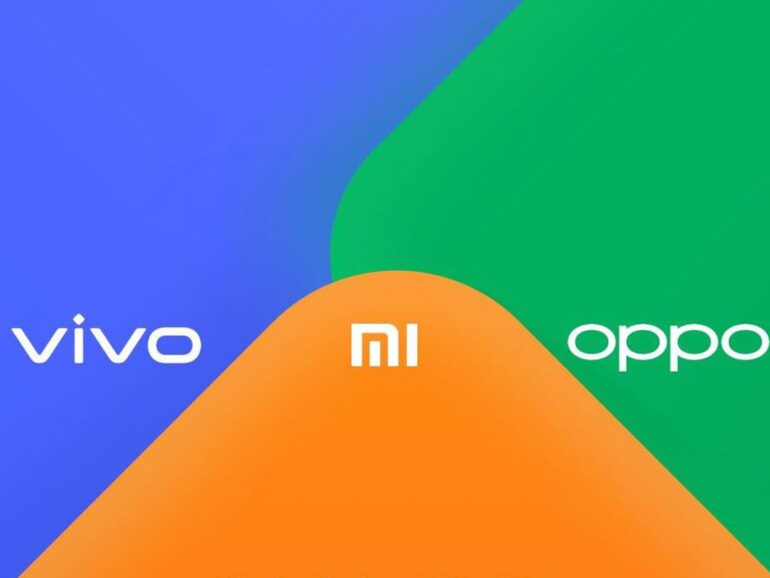TL;DR:
- Xiaomi, OPPO, and Vivo are embracing AI innovation alongside giants like Google and Huawei.
- Google’s Pixel 8 introduces “Audio Magic Eraser” for enhanced video sound quality.
- Huawei unveils Celia AI voice assistant powered by Pangu 3.0 AI.
- Xiaomi’s MiLM-6B, a massive 6.4-billion-parameter language model, emerges secretly.
- MiLM-6B excels in GLUE benchmark, hinting at applications like virtual assistants and chatbots.
- OPPO collaborates with Alibaba Cloud for advanced AI technologies after exiting the chip business.
- Vivo’s 3m-text, a 3-million-parameter language model, contributes to AI-powered innovations.
Main AI News:
In the ever-evolving landscape of smartphones, the infusion of machine learning has become par for the course, yet the realm of artificial intelligence (AI) has surged to unprecedented heights. Smartphone manufacturers are now harnessing the prowess of expansive AI models to revolutionize and refine their device operating systems.
Embracing the AI Revolution, Google has been an avant-garde advocate for the potential of AI as the harbinger of tomorrow. Evidently committed, Google has diligently woven AI into its software architecture. A recent sneak peek into the forthcoming Pixel 8 through a leaked promotional video unveiled Google’s innovative creation, the “Audio Magic Eraser.” Unlike its image-centric counterpart, this ingenious tool orchestrates the elimination of extraneous voices from videos, ushering in a new era of auditory clarity.
Likewise, Huawei, a stalwart in the AI domain, unveiled its latest marvel, the Celia AI voice assistant, adorned with the prowess of the substantial language model, Pangu 3.0 AI. Celia emerges as an epitome of finesse, akin to leveraging the capabilities of ChatGPT.
Enter Xiaomi, OPPO, and Vivo – these manufacturers, once renowned solely for their hardware, are now poised to seize the AI mantle. A recent bulletin from the inside source, Digital Chat Station, surfaced on Weibo, heralding the entry of Xiaomi, OPPO, and Vivo into the AI arena.
Fresh revelations disclose Xiaomi’s covert endeavors with MiLM-6B, an expansive language model emboldened by a staggering 6.4 billion parameters. This audacious feat catapults MiLM-6B among the giants of language models worldwide, securing the ninth position on the esteemed C-Eval list of formidable language models.
Clarification is imperative: these disclosures remain within the sphere of confidentiality. MiLM-6B, although in its nascent phase, has already demonstrated promising prowess across an array of tasks. Notably, it delivered remarkable outcomes on the intricate GLUE benchmark, a compendium of diverse natural language understanding challenges.
The purpose behind Xiaomi’s veiled maneuvers and the narrative behind the model’s genesis remain shrouded in enigma. Plausible applications span virtual assistants, chatbots, and machine translations – domains where MiLM-6B’s voluminous parameters empower it to surmount complex challenges unattainable to more diminutive models.
Within the echelons of C-Eval benchmarks, MiLM-6B etched its mark as the ninth overall, reigning supreme within its parameter cohort. Conversely, within the spectrum of Chinese language proficiency assessment, Xiaomi’s model emerged victorious in the Chinese-exclusive category. However, in the global multilingual sphere, GPT-4.0 laid claim to the throne.
Notably, in April of this year, Alibaba Cloud and OPPO forged a strategic partnership to collectively propel large-scale AI endeavors. This symbiotic relationship empowers OPPO, especially considering its strategic shift away from chip manufacturing. With a renewed focus on innovation, OPPO’s foray into advanced AI features for smartphones is poised to enhance its competitive stance.
Vivo, the contender in this AI narrative, is diligently crafting its own AI-fueled marvels, spearheaded by the pre-training model christened 3m-text. This language model of immense magnitude, encompassing over 3 million parameters, cements its status as one of the grandest language models in the global expanse.
Conclusion:
The aggressive entry of Xiaomi, OPPO, and Vivo into the AI sphere echoes the industry-wide acknowledgment of AI’s transformative potential. As these players introduce groundbreaking AI models and features, the market’s competitive dynamics will undoubtedly intensify. This surge underscores the symbiotic relationship between hardware and AI advancements, reshaping the smartphone landscape into an arena of innovation and enhanced user experiences.

